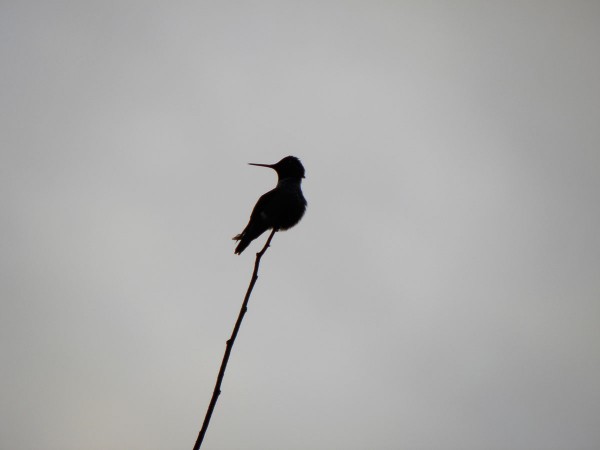
Anna's hummingbird
Laura Matter, Garden Hotline Coordinator
Brighten your dark of winter outlook by envisioning the addition of colorful, diverse and productive habitat plantings to your garden for next season. Including certain plants that will attract parasitoid wasps, ladybeetles, bees, songbirds and even bats can help you to manage pest problems in the growing season and make your fruiting plants more productive. It can even provide additional plants to harvest while you provide habitat at the same time.
Considerations for habitat plantings
- Be diverse in the size and types of plants you add; to attract birds consider the addition of trees to your site and layer your plantings. Different birds hunt for insects and nest in different layers in the landscape.
- Keep in mind the three plant families that attract the most insects: the Apiaceae (carrot, dill, cilantro), Asteraceae (daisy, Echinacea, yarrow) and Lamiaceae (mint, lavender, oregano). These families also have many useful plants and include a great variety of herbs and flowers.
- Become familiar with native pollinators and the types of plants that can host and feed them throughout their life cycles. For instance native willows host many species of butterfly larvae and are an excellent habitat plant when included with flowering, nectar-producing plants.
- Native solitary bees, like the orchard mason bee, need small cavities in wood to nest in. Great pollinators for early blooming fruit tree crops, these gentle bees benefit from the purposeful addition of “mason bee houses” in the garden. If you are fortunate enough to have woodlands on your property, protect those old snags and stumps as habitat.
- Pacific Northwest bat species are prolific insectivores and can help to clear mosquitoes from ponds and wetland areas very efficiently. If you do not have a water feature consider adding one. Add white flowering and night blooming plants to increase moth populations, another favorite food source for bats.
By following the above guidelines you will not only create great habitat, but a beautiful and life filled garden as well.